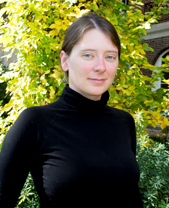-
Membership
Membership
Anyone with an interest in the history of the built environment is welcome to join the Society of Architectural Historians -
Conferences
Conferences
SAH Annual International Conferences bring members together for scholarly exchange and networking -
Publications
Publications
Through print and digital publications, SAH documents the history of the built environment and disseminates scholarship -
Programs
Programs
SAH promotes meaningful engagement with the history of the built environment through its programs -
Jobs & Opportunities
Jobs & Opportunities
SAH provides resources, fellowships, and grants to help further your career and professional life -
Support
Support
We invite you to support the educational mission of SAH by making a gift, becoming a member, or volunteering -
About
About
SAH promotes the study, interpretation, and conservation of the built environment worldwide for the benefit of all
Delhi: Day 5 & 6
We arrived in Delhi after the longest two hour flight! Northern India is notorious for fog in the winter, and yesterday was only exceptional in that it was foggy enough to make our plane’s pilot circle for an hour before landing briefly in Lucknow to refuel and try to re-land in Delhi. Eventually, though, we arrived, loaded our new tour bus, and joined Piyush, our local tour administrator. In a race against sunset, we rushed to Humayun’s Tomb (1570).
It was a most ethereal experience to walk through the gateway into the garden. The light in the foggy sunset glowed orange almost, and it seemed like a magical introduction to Delhi. Here, we were visiting the beginning of the Mughal tomb garden, the model for the Taj Mahal.
We were privileged to have Ratish Nanda (the Projects Director for the Aga Khan Trust for Culture and the preservationist at both Humayun’s Tomb as well as Babur’s tomb in Kabul) join us to discuss the site and the conservation philosophy followed in its restoration/preservation. The idea is to replicate what was there before employing craftsmen of traditional techniques of building. For instance, the lower level surround had been covered in concrete, but it was now restored using materials such as lime mortar mixed with egg whites to give the whitewashed surface.
We began this morning driving through Lutyen’s New Delhi, seeing India Gate and the princely or maharaja palaces nearby. We continued driving north toward Shahjahanabad — now considered to be Old Delhi, though this was in fact only the most recent “Old Delhi” of six others before the British colonial New Delhi of the twentieth century. Driving through one of the thirteen original gates of Shahjahanabad, we reached the Jama Masjid, built by Shah Jahan between 1644-58. It remains the largest mosque in India. Again, we had a lovely foggy morning so that the tips of the minarets sometimes disappeared, and the building had a pleasant quietness about it.
From the mosque we descended the large staircase to wind our way through the narrow streets of Shahjahanabad that smelled pleasantly of incense and cooking food. Much of this area had been rebuilt since the first Indian War of Independence in 1857 after which the British cleared much of this area surrounding the Red Fort. Along the way through this area, we visited an alley that appeared to be separated and more quiet than the more commercial narrow streets, learning that it was known as jeweler’s row with nine households of jewelers and a Jain temple at the end of these street.
Exiting the denser areas, we arrived at Chandni Chowk or “Moonlight Square,” the central street of Shahjahanabad that leads to the main gateway of the Red Fort. Before reaching the fort, we stopped briefly to see the courtyard of an abandonedhaveli or urban palace, such as those discussed by Jyoti Hosagrahar in her book Indigenous Modernities: Negotiating Architecture and Urbanism (London: Routledge, 2005).
We continued along Chandni Chowk to the Lahori Gate of the Red Fort, built by Shah Jahan after he returned to Delhi from Agra in the mid-seventeenth century. Anubha led us through the various buildings of the fort, discussing each building’s function and significance in courtly life.
Departing Old Delhi, we ended our tours for the day at Qutb Minar, the oldest city in Delhi, established during the late twelfth century by some of the first Muslim conquerers in India. Led by Mahmud Ghurid from central Asia, this ruler established the area but did not stay in Delhi, leaving his “slaves” to rule these new territories. Joining us at this site, Tapan Chakravarty (Professor of Interior Architecture and Design at Pearl Academy of Fashion in Delhi) led us through the ruins from the Quwwat-al-Islam (Might of Islam) mosque to the enormous Qutb Minar and the madrasa on the edges of the complex. It was a site that I had been looking forward to enormously, and I was not disappointed in seeing the semi-erased faces on the re-used Hindu-temple capitals in the mosque. It was the epitome of intersection of cultures that draws my interest so intently.
 Gretta Tritch Roman, Ph.D. Candidate, Penn State University
Gretta Tritch Roman, Ph.D. Candidate, Penn State University Gretta Tritch Roman is a Ph.D. candidate in art and architectural history at the Pennsylvania State University. She earned a Bachelor of Architecture at the University of Arkansas and her Master’s degree in art and architectural history at the Pennsylvania State University where she completed a thesis titled, “La mise en scène icarienne: The Construal of Utopian Space in Nauvoo, Illinois, 1849-58.” Recently her research has focused on strategies of eclectic designs and the ways in which varying audiences respond to such buildings, opening discussions that have ranged from Lucknow, India, to Chicago, Illinois. Currently she is working on her dissertation under the working title, “Rivalry, Revivalism, and Ritual: Building the Grain Exchanges of the American Midwest, 1875-1930.”



















Leave a commentOrder by
Newest on top Oldest on top